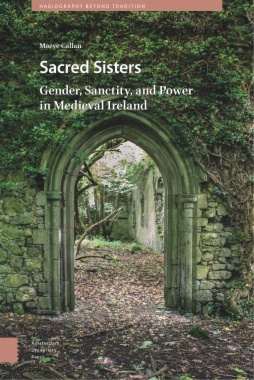Sacred Sisters focuses on five saints: the four female Irish saints who have extant medieval biographies (Darerca, Brigid, Íte, and Samthann), and Patrick, whose writings -- fifth-century Ireland’s sole surviving texts -- attest to the centrality of women in Irish Christianity’s development. Women served as leaders and teachers, perhaps even as bishops and priests, and men and women worked together in a variety of arrangements as well as independently. Previous studies of gender in medieval Ireland have emphasized sexism and sex-segregated celibacy, dismissing abundant evidence of alternative approaches throughout the sources, including in the Lives of Ireland’s female saints. Sacred Sisters places these generally marginalized texts at its center, exploring their portraits of empowered, authoritative, compassionate women who exemplified an accepting and affirming ethics of gender and sexuality that would be unusual in many mainstream Christian movements in the present day, let alone in the Middle Ages.
- Cover
- Table of Contents
- Preface
- Introduction
- A Golden Age of Gender Relations?
- A Responsible Usable Past
- Book Overview
- Memories of the Future
- 1 “Founded upon the Rock Which Is Christ”
- What Patrick and His Promoters Reveal about Women in the Early Irish Church
- Patrick in His Own Words
- Women in Patrician Propaganda
- Syneisaktism
- Conclusion
- 2 “A New and Apostolic Band of Virgins Arose”
- Darerca, an Exceptionally Learned Abbess
- Untangling the Sources
- Doctissima Abbatissa, an Exceptionally Learned Abbess
- Community
- Gender Dynamics
- Diversity within Community
- Conclusion
- 3 “The Safest City of Refuge”
- Brigid the Bishop
- Many Lives, Little Certainty
- Brigid, the Early Years
- Consecration and Ordination
- Double Monasteries
- Meeting Women’s Needs
- Secunda Brigida
- Conclusion
- 4 “God Is Always Present with Those Who Exemplify Such Devotion”
- Íte, Foster-Mother of the Saints of Ireland
- The Path to the Holy Life
- Prophecy and Patronage
- Asceticism (Warning: It Gets Nasty!)
- Conclusion
- 5 “Do Not Harass My Sisters”
- Samthann, an Abbess Not to Be Crossed
- Urney
- Constructing Clonbroney
- Cáin Adomnáin (Adomnán’s Law, a Minor But Relevant Digression)
- The Mercy of Samthann
- Female Solidarity
- Wisdom
- The Célí Dé
- Conclusion
- 6 “I Place Myself under the Protection of the Virgins All Together”
- Sister Saints with Something Like a Life
- Lasair, “Hell Thereafter from Me”
- Attracta, “Wise in Words and Honorable in All Things”
- Cranat, “My Body to Be Thus under [My] Control”
- Gobnait, “How Many Years Make Up a Nameplace”
- Dígde, “They Shall Never Be without Some Wonderful Glorious Nun/Old Woman among Them”
- Conclusion
- Conclusion
- Appendices
- Appendix A
- Appendix B
- Appendix C
- Appendix D
- Appendix E
- Bibliography
- Primary Sources
- Secondary Works
- Index
- List of Figures
- Image 1: Codex Salmanticensis 197v; reproduced with the permission of the Royal Library of Belgium
- Map 1: Sanctae’s Sites
- Image 2: Scattery Island
- Image 3: Killevy
- Image 4: Killevy, Darerca’s grave
- Image 5: Faughart, Brigid’s well
- Image 6: Kildare Round Tower and Fire House
- Image 7: Killeedy
- Image 8: Killeedy altar
- Image 9: Clonbroney
- Image 10: Kilronan
- Image 11: Killaraght
- Image 12: Kilgobnait
- Image 13: Kilgobnait interior
- Image 14: Ballyvourney
- Image 15: Ballyvourney interior
- Image 16: Ballyvourney sheela
- Image 17: Beara
- Image 18: Manisternagalliaghduff

